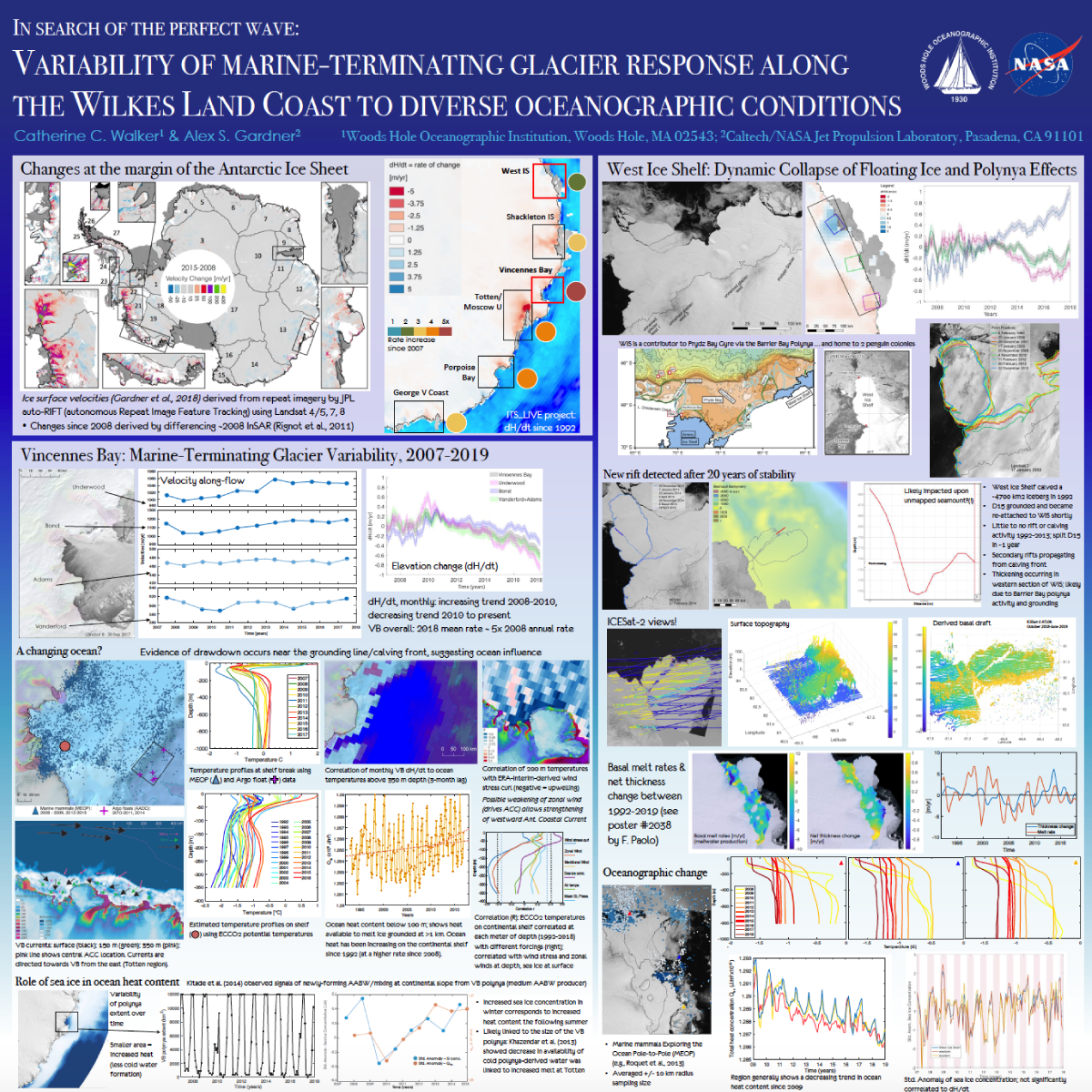In Search of the Perfect Wave: Variability of Marine-terminating Glacier Response along the Wilkes Land Coast to Diverse Oceanographic Conditions
Walker, C.C. and Gardner, A.S. (2020)
Presented at:
Ocean Sciences Meeting 2020Abstract
East Antarctica has been relatively stable over the last ~decade (Gardner et al., 2018). But recently, changes in glacier terminus position (Miles et al., 2013; 2016) have hinted that East Antarctica is starting to wake. Particular focus has been on Totten Glacier, whose 2001-2007 acceleration was linked to warm water influx (Rintoul et al., 2016). To the west of Totten are the Vincennes Bay (VB) glaciers, on which we recently reported; to the East are Moscow University and Porpoise Bay glaciers. Totten and its neighbors drain the Aurora Subglacial Basin (ASB). Cook, Ninnis and Mertz glaciers, along with small Adelie Coast glaciers, drain the Wilkes Subglacial Basin (WSB). Both basins stand to contribute significantly to rising sea levels. A paucity of temporally and spatially diverse data has limited assessments of change, and importantly, drivers of change - until now.
We now have Antarctic-wide velocity maps on annual/sub-annual scales via the ITS_LIVE project (Gardner et al., 2018), and an ever-increasing altimetry elevation time series (ICESat, CryoSat, ICESat-2 and IceBridge), which have enabled investigations of dynamic change along the coast. We have detected flow variability and surface elevation change in many of the marine-terminating glaciers along the Wilkes Land coast, however at very different magnitudes. After separating out the dynamic signal, some sections of Wilkes Land coastal ice have approximately double their rate of lowering, while others have gained mass.
We characterize changes over the last two decades to determine mechanisms driving change, and whether these are long- or short-term responses. We have identified links to changing ocean conditions using shipboard and marine-mammal-deployed CTDs along the continental shelf, ECCO2 simulations, and atmospheric reanalysis data. We find that changes in zonal winds, the Antarctic Coastal Current, and sea ice concentration/polynya activity have resulted in changes to delivery of ocean heat to the Wilkes Land coast. While each of these individually could explain the ocean heat variability, it is the interplay and complex interactions between these drivers themselves that we investigate here to determine how such interactions vary along the Wilkes Land coast to produce differing responses in marine-terminating ice along that margin.
View Document (PDF, 2.1 MB) »

